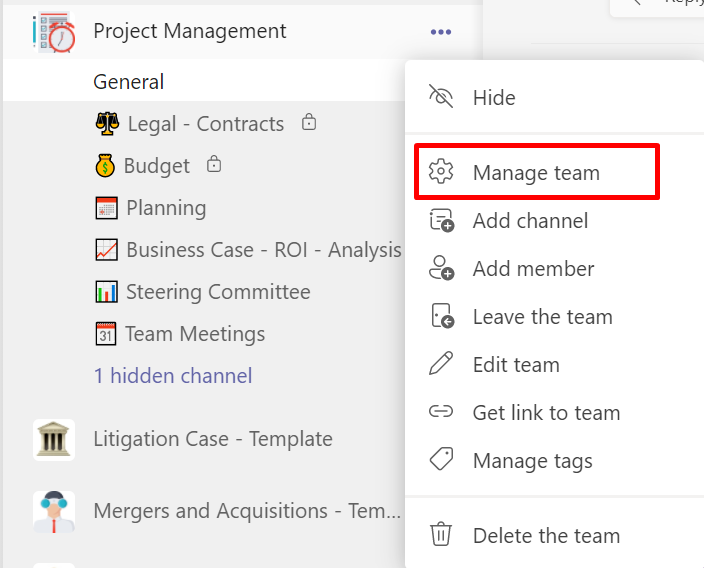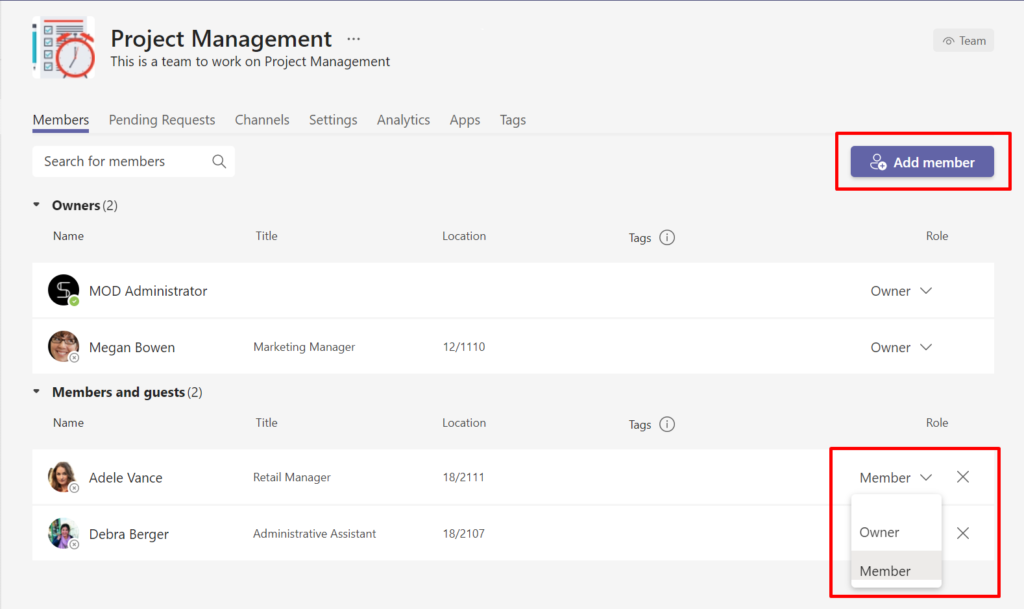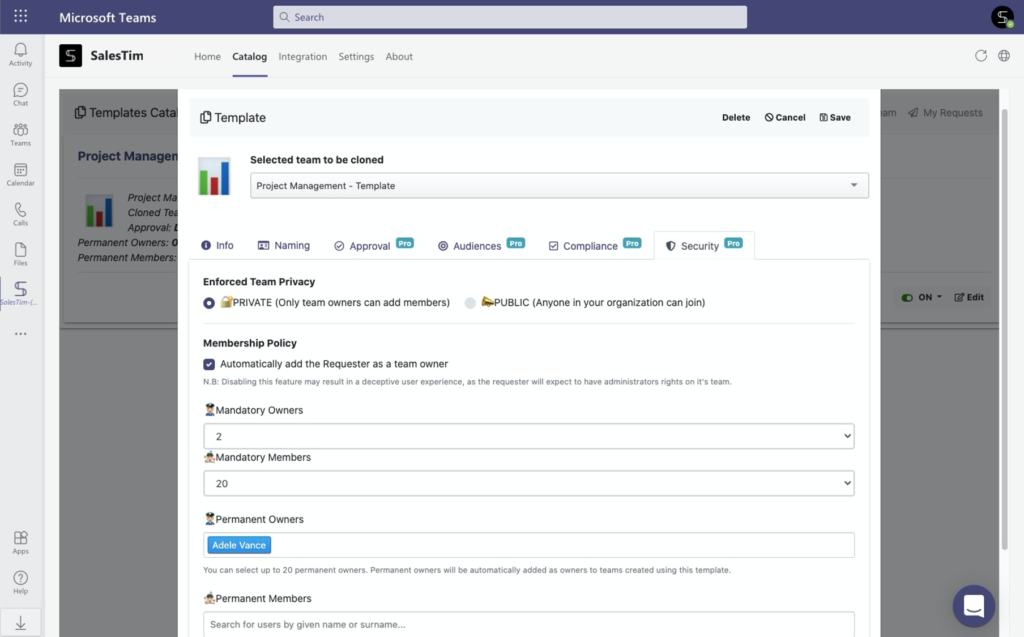Microsoft Teams is a dynamic virtual workspace and as such, it operates just like any other work environment and experiences the same issues. For example, when a team is left without a manager in an offline setting, they continue working well for a while. However, after some time the absence of a manager starts affecting everyone in the team. A similar thing happens in Microsoft Teams when a team becomes orphaned – in other words, left without an owner.
It is a very common phenomenon in Microsoft Teams. With this article, we will help you understand the main reasons why teams become orphaned and how to deal with them effectively.
What are orphaned teams in Microsoft Teams
An orphaned team in Microsoft Teams is one that doesn’t have an assigned owner, or it has one who is no longer active. The keyword here is owner. An orphaned team can still be used by its members, but their activities will be limited as they have no owner.
Owners are users that manage certain settings for their team such as adding and removing members, adding guests, and handling administrative tasks. There can be multiple owners in a team. Members on the other hand have limited powers. They can interact with the other members and collaborate using features that the team owner has granted them access to.
You can learn more about the difference between team owners and members in this blog post.
Similar to real-life teams that have managers, teams in Microsoft Teams rely on owners to enable certain activities. So, when a team becomes ownerless (just like a team without a manager), the scope of their work is limited. The team owners are the only ones who can:
- Configure the membership settings for example, add or remove new owners and members.
- See what kind of private channels exist and delete them.
- Manage the members’ permissions for channels, tabs, and connectors
- Manage settings and apps within the team and determine if members can do it too.
- Add, monitor, and remove guests and other external users.
- Edit, delete, renew, archive, or restore a team.
As you can see, these are some important capabilities, and it can be rather tricky if there is no one in the team with these means.
There are several reasons why some teams become orphaned. The first and probably the most common reason is that the owner simply leaves the team. It can be because they are:
- Leaving the company altogether
- Moving to another department or getting another position
Teams can also become orphaned when the owner is deleted from Microsoft 365 or Azure Active Directory. This can be either on purpose or a result of a technical issue.
How to find orphaned teams in Microsoft Teams
To effectively deal with orphaned teams in Microsoft Teams, you first need to successfully identify them. Unfortunately, Microsoft Teams doesn’t send out notifications alerting about ownerless teams. Finding orphaned teams is more of a manual task and here is how you can do it.
Admin center
The easiest way is to go to the admin center, where you can get an overview of your teams including the number of standard and private channels, team members and owners. If a certain team doesn’t have an owner, you’ll see a 0 in that column and a warning sign next to it. There are no filters in the admin center, so you’ll need to be thorough and make sure you didn’t miss any 0s and warning signs. You need to repeat this regularly as ownerless teams can appear any time.

The downside of the admin center is that it shows teams with absolutely no owners. In most cases, it means owners whose accounts have been deleted from the Azure Active Directory. You can’t see owners who can’t sign into Microsoft 365 or owners who are simply inactive. Unfortunately, there is no quick and easy way of detecting such ownerless teams. You will have to go over each team and check the owner’s status.
If you don’t want to have to spend your precious time on these manual tasks, then you can put forward mechanisms that will prevent the formation of orphaned teams in the first place. We’ll explain how soon.
Orphaned teams pose risks
At a glance, it may seem like ownerless teams are not such a big deal. At the end of the day, members can still collaborate via chats, calls or sharing files. In reality, orphaned teams can lead to major inconveniences. Besides limiting the work of the members, ownerless teams pose other rather serious risks. The threats revolve around security especially in teams that have guest users. Keep in mind that unlike external users, who can only chat with you, guests have more capabilities.
As we’ve already mentioned, team owners are the only ones who can add or remove guests. If at any point a team becomes orphaned while having guest users, they will remain there indefinitely even after they’re no longer needed in the team.
Without an active owner in place, “the best” solution for the members is to migrate so that they can continue their collaboration without the guest users witnessing it. Such migrations can eventually lead to Teams sprawl.
To sum up, orphaned teams will negatively impact the productivity of the team members and create security-related issues.
What to do with orphaned teams?
Now onto what you came here for – what to do with ownerless teams. Deleting them sounds like an easy way out and a major inconvenience for the members as they will lose all their data (e.g. chats, files, apps, etc.). Luckily, there is an even simpler solution. As the famous saying goes “prevention is better than cure.” The best remedy against orphaned teams is always assigning more than one owner to all teams. Make sure that all your teams have more than one active owner at all times, so that even when one leaves, the other is there to manage the team.
How to add owners to your teams
Adding an owner to a team is a very simple process. Click on the … icon next to them and select Manage team from the drop down menu.

Microsoft Teams will redirect you to a window where you can see the current members and guests of your team. You can add a new member by clicking Add member on the right upper corner. To assign a new owner from the existing members, go to the dropdown menu under Role and choose Owner.

These are the steps if you are the team owner. In case you’re a team member, who wants to assign a new owner to the team, you’ll go through the same steps, but the owner won’t be added automatically. Instead, you’ll need to wait for the team owner to approve your request.
You need to follow these steps for every single one of your teams. You can either do it manually or use Collaboration templates and assign Permanent owners at the template level for all future teams. So, whenever a new team is created, these people will automatically be added to the team.
Permanent ownership and membership imply that even when team membership is updated – say, someone changed an owner’s status to member – these policies will be reapplied. Permanent owners will always stay owners, i.e. their status can’t be changed.
You can even go a step further and set up a mandatory number of owners and members – this way, you can prevent users from creating new teams with only one owner.
How to add owners to your teams at the template level
Let’s say you have three ongoing projects, and you need to create three separate teams for each of the projects, where your colleagues can collaborate. The projects are similar in structure, so you’ll need to have the same kind of channels and configurations for each team. Citing back to the point made above, you can either do this manually or create a team template and replicate it. Here is how you do it via SalesTim:
- Go to Microsoft Teams and create the team, which will be the basis of your template. Make sure you add all the necessary channels, apps, tabs and manage the rest of the configurations.
- Open the SalesTim app and from the top menu select Catalog.
- Select +New Template and choose the original one that you’d just created.
- As a next step, you can configure all the required governance policies including adding mandatory owners and members.
- Add permanent owners and members and click Save.

Five simple steps and your template is ready. So, every time you use that template to create a new team, they will automatically add the Permanent owners and members you indicated in the template.
Orphaned teams can become a big headache which you can avoid by being proactive. Make sure that assigning more than one owner is an integral part of your governance policies. Even if you do so, it doesn’t hurt to go to the admin center every once in a while and see what’s going on with your teams.
Contact our team to learn more about how you can enforce stronger governance while improving collaboration and end-user experience.
Feature image designed by Freepik
